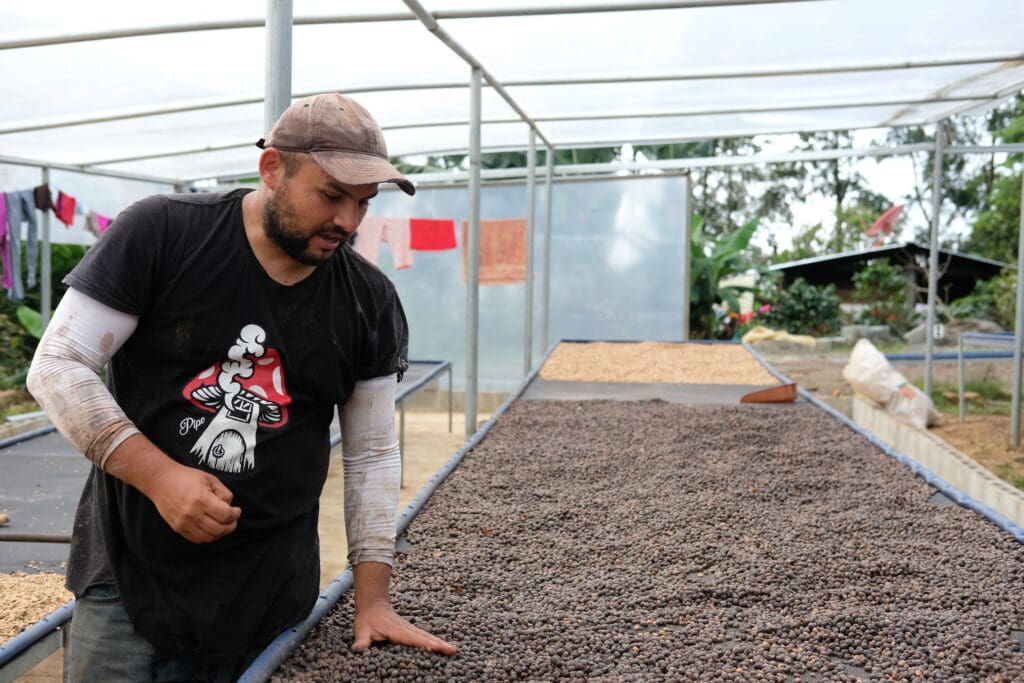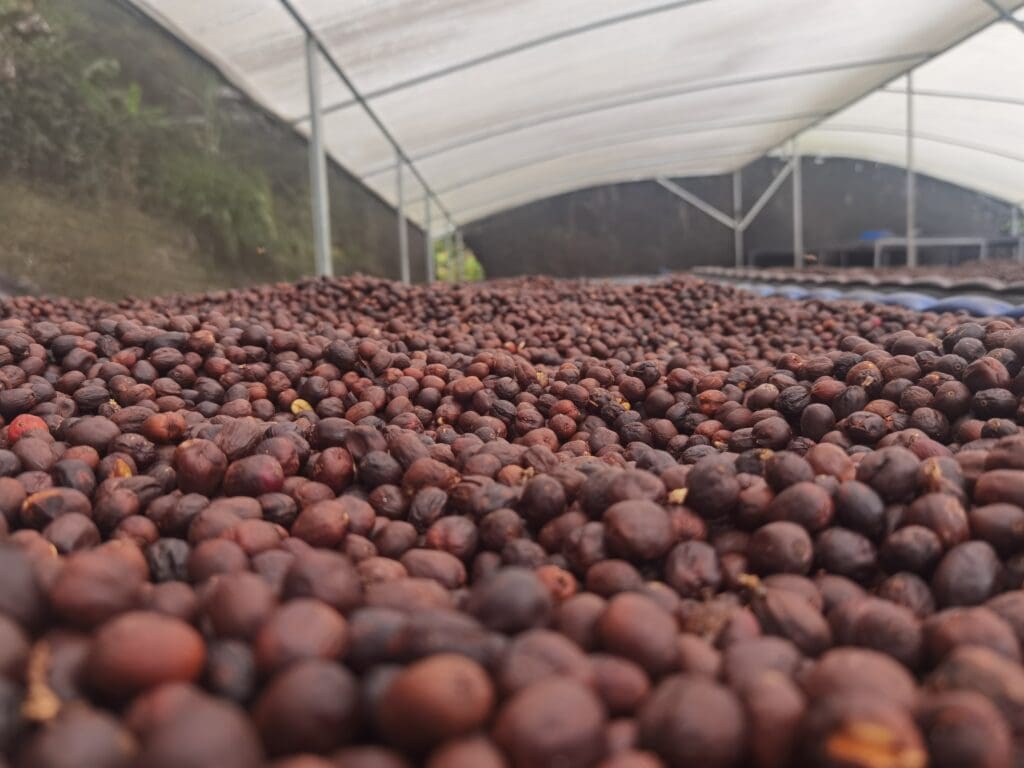Don Senel Micromill was founded by Senel Campos in 2014 as a response to poor coffee prices at the time. In his first year, Don Senel processed 300 kg of coffee from Finca La Toboba, fitting a motor from a washing machine to an old hand pulper and using the basic infrastructure already in place at the mill. This first lot scored well, and during the next harvest Senel would purchase and process as much coffee as possible in order to earn the money needed to buy new equipment, improve the drying areas, and to invest in purchasing land with good conditions for cultivating new varieties known for their complex and high quality cup profiles.
Today, Don Senel has two farms, Las Huacas and El Cola Roja, planted with Obata and Villa Sarchi trees. The topography of the land is broken and uneven, but both farms enjoy nutrient-rich soil and a unique microclimate created between two nearby mountain canyons.
The micromill has changed quite a lot from its beginnings in 2014, including raised beds and greenhouse drying areas and more modernized equipment and tools. Processing at the mill has also changed from the more traditional practices utilized at first, now involving the measurement and tracking of variables like pH and brix degrees to control and influence the final cup profile of each microlot.
This lot of Obata underwent Anaerobic Natural processing at Don Senel Micromill. Freshly harvested cherries are first fermented whole on raised beds for three days. The partially fermented cherries are then sealed into plastic barrels where they undergo anaerobic fermentation for four days. The fermented cherries are then dried first on raised drying beds before drying is finished in a drum drying oven. Total drying time is 30–40 days.





